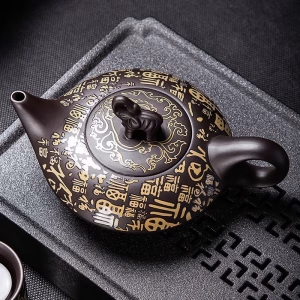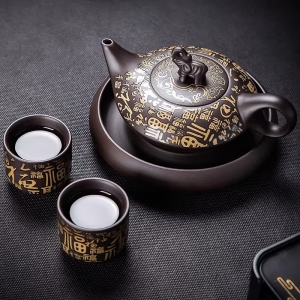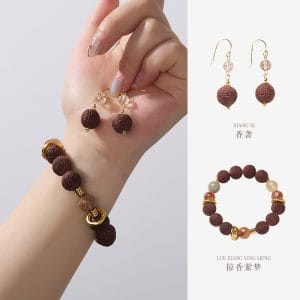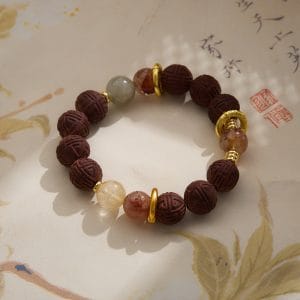The Ancient Roots of LuckFor as long as humans have gazed at the stars or watched the seasons turn, we’ve sought to understand and influence the invisible forces that shape our lives. Luck, that elusive blend of chance and fortune, has been personified, ritualized, and symbolized across every culture and epoch. The ancient Egyptians carried scarab amulets, believing the beetle’s cycle of life represented rebirth and protection. In Rome, men would touch the testicles of a sacrificed animal for good fortune—a practice that evolved into the more palatable ‘knock on wood.’ These weren’t mere superstitions; they were foundational attempts to impose order on chaos, to find agency in a capricious world. What’s fascinating is how these symbols traveled, morphing across trade routes and generations. The horseshoe, for instance, likely originated with the Greeks, who believed iron could ward off evil, and later found a home above doors in Europe and America. This deep-seated human desire to improve our odds speaks to something universal: the hope that with the right token, the right action, we might tilt fate in our favor.

In Eastern traditions, luck is often intertwined with philosophy and cosmology. The Chinese concept of ‘qi’ or life force, and its balance through Feng Shui, dictates how spaces should be arranged to attract positive energy and prosperity. Symbols like the laughing Buddha or the three-legged money frog are not just decorations; they are intentional conduits for fortune. Similarly, in India, the symbol of the swastika (long before its tragic appropriation) represented auspiciousness and good luck in Hindu, Jain, and Buddhist rituals. These systems reveal a more holistic view of luck—not as random chance, but as a flow of energy that can be nurtured, directed, and respected. It’s a reminder that improving luck has historically been less about controlling outcomes and more about aligning oneself with larger, benevolent forces. This philosophical approach invites a shift from superstition to mindfulness, from hoping for luck to cultivating the conditions where it can flourish.
Symbols and Personal AgencyEven in our data-driven age, symbols of luck retain a powerful grip on the human psyche. Industry reports suggest that around 6%–12% of people in Western cultures admit to carrying a lucky charm, with higher percentages engaging in smaller rituals like crossing fingers or avoiding black cats. But why? Psychologists point to the concept of ‘illusion of control’—the belief that we can influence events that are actually determined by chance. This isn’t necessarily a negative trait; in fact, it can reduce anxiety and improve performance by boosting confidence. When an athlete wears a lucky pair of socks or a student uses a specific pen for exams, they’re creating a psychological anchor for focus and calm. The symbol itself doesn’t change the external world, but it can change our internal state, making us more open to opportunities and resilient to setbacks. In this light, improving luck becomes a act of self-empowerment, where the charm is a tool for mindset shift rather than a magical talisman.
I’ll never forget the small, worn rabbit’s foot my grandfather carried in his pocket every day. He was a pragmatic farmer, not given to flights of fancy, but that little charm was his constant companion. When I asked him about it as a child, he chuckled and said, ‘It’s not about magic, it’s about remembering.’ For him, it was a token of gratitude for the times things had gone right against the odds—a drought-breaking rain, a healthy calf born in the dead of winter. His lesson stuck with me: luck often favors those who recognize it in hindsight and carry that gratitude forward. This personal reflection aligns with what many traditions teach: that luck isn’t just found; it’s acknowledged and honored. It’s the practice of seeing fortune in the everyday—a lucky parking spot, a timely phone call—and letting that awareness build a positive feedback loop in our lives.
If you’re looking to incorporate a little more fortune into your daily routine, consider exploring handmade cultural gifts from artisans who embed traditional symbolism into their work. For instance, a Hamsa hand necklace from Middle Eastern crafters, believed to ward off the evil eye, or a dreamcatcher from Native American artists, intended to filter negative energy. These items carry the weight of heritage and intention, making them more meaningful than mass-produced trinkets. My practical recommendation? Place a small, beautiful symbol—like a polished jade stone for wisdom or a citrine crystal for abundance—on your desk or in your pocket. Let it serve not as a superstitious crutch, but as a tactile reminder to stay open, grateful, and proactive. The real ‘good find’ here is the mindset it cultivates: one that notices opportunities and believes in possibility.
Beyond charms and symbols, many cultures emphasize actions to attract luck. The Irish tradition of saying ‘bless you’ when someone sneezes (originally to prevent the soul from escaping) is a kind of communal luck-sharing. In Japan, the act of giving omamori—small, embroidered amulets from shrines—to loved ones is a way of wishing them protection and good fortune. These practices highlight a crucial aspect often overlooked: luck is not always personal; it can be collective. We can improve luck for others through kindness, support, and well-wishing. This relational view expands the concept from individual gain to communal well-being. It suggests that perhaps the best way to attract good fortune is to generate it for those around us, creating a ripple effect that circles back in unexpected ways.
Ultimately, the journey to improve luck is a blend of history, symbolism, and psychology. It’s about drawing on ancient wisdom without surrendering agency to fate. Whether through a cherished heirloom, a mindful practice, or a cultural ritual, we engage with luck to navigate uncertainty with more grace and hope. The symbols we choose—be it a four-leaf clover or a handmade cultural gift—are vessels for meaning, connecting us to something larger than ourselves. They remind us that while we can’t control every outcome, we can cultivate attitudes that make us luckier: gratitude, openness, and resilience. In the end, improving luck might simply mean improving our relationship with chance itself, seeing it not as a foe to be defeated, but as a dance to be joined with curiosity and heart.
You may also like
The Palace Museum Paper-Cut Light Art Fridge Magnets: Chinese Cultural Style Creative Gift Series
Price range: $27.00 through $36.00 Select options This product has multiple variants. The options may be chosen on the product pageAladdin’s Lamp Heat-Change Purple Clay Tea Pot
Original price was: $108.00.$78.00Current price is: $78.00. Add to cartHandwoven Zhuang Brocade Tote Bag – Large-Capacity Boho Shoulder Bag
Original price was: $178.00.$154.00Current price is: $154.00. Add to cartAncient Craft Herbal Scented Bead Bracelet with Gold Rutile Quartz, Paired with Sterling Silver (925) Hook Earrings
Original price was: $322.00.$198.00Current price is: $198.00. Add to cartBambooSoundBoost Portable Amplifier
Original price was: $96.00.$66.00Current price is: $66.00. Add to cartAncient Craftsmanship & ICH Herbal Beads Bracelet with Yellow Citrine & Silver Filigree Cloud-Patterned Luck-Boosting Beads
Original price was: $128.00.$89.00Current price is: $89.00. Add to cart












